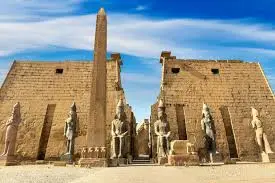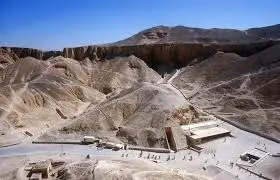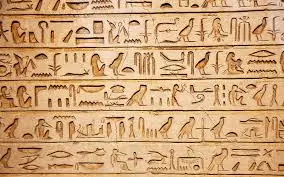Ancient Egypt: Exploring A Journey Through History
Ancient Egypt, a three-millennium-long civilization, is renowned for its monumental architecture, intricate religious beliefs, and advanced writing systems, captivating scholars and enthusiasts alike. Where was Ancient Egypt Located? Situated along the fertile banks of the Nile River, this ancient land has left an indelible mark in the world. Let’s embark on a journey through time to unravel the mysteries of this extraordinary civilization.
Exploring A Journey Through History of the Ancient Egypt
Ancient Egypt was a civilization that flourished along the Nile River for millennia. Its history began with the Nile’s annual floods, leading to the formation of independent kingdoms. The Old Kingdom, unified under a single pharaoh, marked the beginning of the Old Kingdom. The Middle Kingdom, lasting from 2055 BC to 1650 BC, saw a renewed golden age with powerful pharaohs, trade, and improved irrigation systems.
The Second Intermediate Period saw weak central authority and foreign invasions, while the New Kingdom saw the height of Egyptian power and influence. The Late Period and Decline saw Egypt’s power decline due to internal conflicts, foreign invasions, and economic instability. The Roman conquest of Egypt in 30 BC marked the end of the pharaonic period.
Religion and Beliefs of the Ancient Egypt
Ancient Egyptian religion was polytheistic, governing life and nature through a pantheon of gods and goddesses. Ra, Osiris, and Isis were revered deities. Death was significant, with elaborate rites and preparations. This complex system lasted over 3,000 years, influencing art, architecture, literature, and daily life. Core Beliefs were as follows:
- Egyptians practiced polytheism, worshipping various gods and goddesses representing nature and the universe, including Ra, Osiris, Isis, and Thoth, who represented the sun, fertility, magic, and wisdom.
- Maat, an ancient Egyptian concept of truth, justice, and order, was deemed vital for the universe’s proper functioning and a responsibility humans had to uphold
- Egyptians believed in an afterlife judged by Osiris, where worthy individuals could live a happy life in the Field of Reeds.
Ancient Egyptian religion significantly influenced life, providing comfort, security, and understanding of the world, while also ensuring order and taking religious duties seriously.
Discover Architectural Marvels of Ancient Egypt
Ancient Egyptian architecture was renowned for its massive scale, precise engineering, and symbolism, served as temples to gods, tombs for Pharaohs, and showcased Egyptian civilization’s power and ingenuity.Here are some of the most famous architectural marvels of Ancient Egypt:
The Pyramids

The Pyramids, including the Great Pyramid of Giza, are iconic Ancient Egyptian structures, built as Pharaohs’ tombs, whose construction methods remain a mystery.
The Great Sphinx
The Great Sphinx is a recognizable limestone statue with lion body and human head, and believed to have guarded the pyramids, located near Giza Plateau.
Temple of Luxor

The Temple of Luxor was built by Pharaoh Ramses II, and a massive complex dedicated to Amun, renowned for its grand entrance pylons and Avenue of Sphinxes.
Abu Simbel
Abu Simbel and a rock-cut temple complex in southern Egypt, dedicated to Pharaoh Ramses II and renowned for its colossal statues of Ramses II.
Valley of the Kings

The Valley of the Kings, near Luxor, is a necropolis containing tombs of New Kingdom Pharaohs, adorned with hieroglyphs and Egyptian mythological paintings.
Hatshepsut Temple
The Hatshepsut Temple was a mortuary in Deir el-Bahri built by Pharaoh Hatshepsut, renowned for its unique terraced design and stunning reliefs.
Hieroglyphics: The Ancient Script

Hieroglyphs, ancient Egyptian writing systems, were intricate symbols used for over 3,000 years to convey language. They consist of three types: logograms, which represent entire words, phonograms, which represent sounds, and determiners, which act as grammatical cues to clarify the meaning of a word.
Hieroglyphs were a complex system used by the Egyptians to write words and sounds, adding context and meaning. They were primarily used for monumental inscriptions on temple walls, tombs, and obelisks, while hieratic was used for everyday writing. After the fall of the Roman Empire, their understanding declined, but the Rosetta Stone, a slab with the same inscription in hieroglyphs, Demotic, and Ancient Greek, provided the key. Today, hieroglyphs offer valuable information about ancient Egyptian history, religion, and daily life.
Ancient Egypt’s Enduring Impact
Ancient Egypt’s cultural contributions, including pyramid architecture and religious beliefs, continue to shape our world today, offering insights into human civilization’s origins, complex societies, and human spirit resilience.
What are 5 facts about Ancient Egypt?
- Pyramid builders were likely skilled laborers, farmers during the Nile flood season, not slaves, according to evidence.
- Cleopatra, the Ptolemaic dynasty’s pharaoh, was Greek, ruled Egypt after Alexander the Great’s death, adopting Egyptian customs while maintaining Greek heritage.
- Egyptians were skilled surgeons, performing complex procedures like bone setting and trephination, and had a deep understanding of anatomy and herbal remedies.
- Ancient Egyptians regularly wore makeup for practical and religious purposes, including protection from the sun and warding off evil spirits, with Kohl being a common choice.
- Ancient Egyptians revered cats as sacred animals, associated with goddess Bastet, protectors, and mummified after death. Harming or owning a cat could result in severe punishment.
As we journey through the annals of history, Ancient Egypt showcases human ingenuity, creativity, and resilience, from the Nile to pyramids, captivating and inspiring us to unravel its mysteries and explore its enduring legacy.
Don’t miss out on current updates, kindly like us on Facebook , Follow Us On Instagram & Subscribe To Our Channel OR leave a comment below for further inquiries.